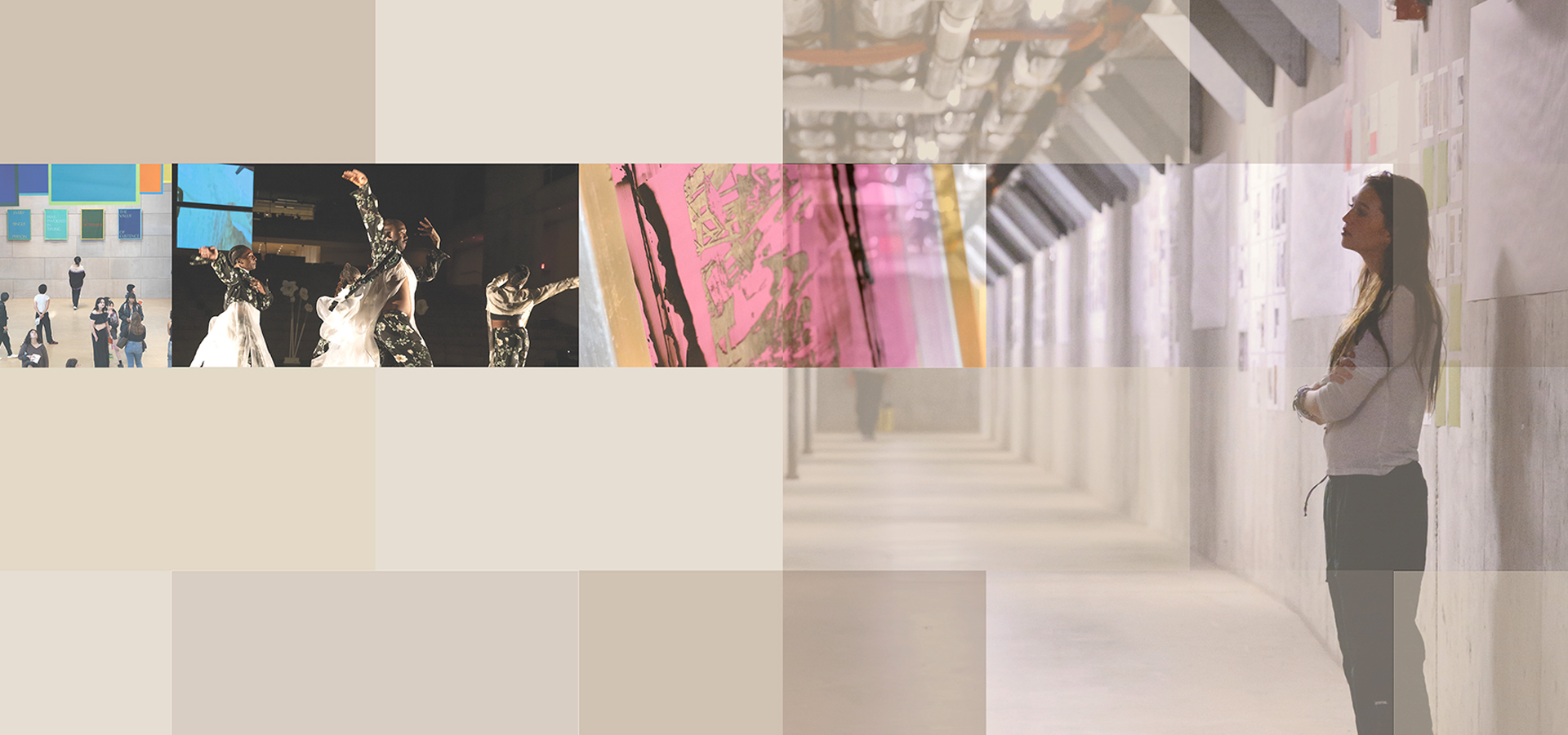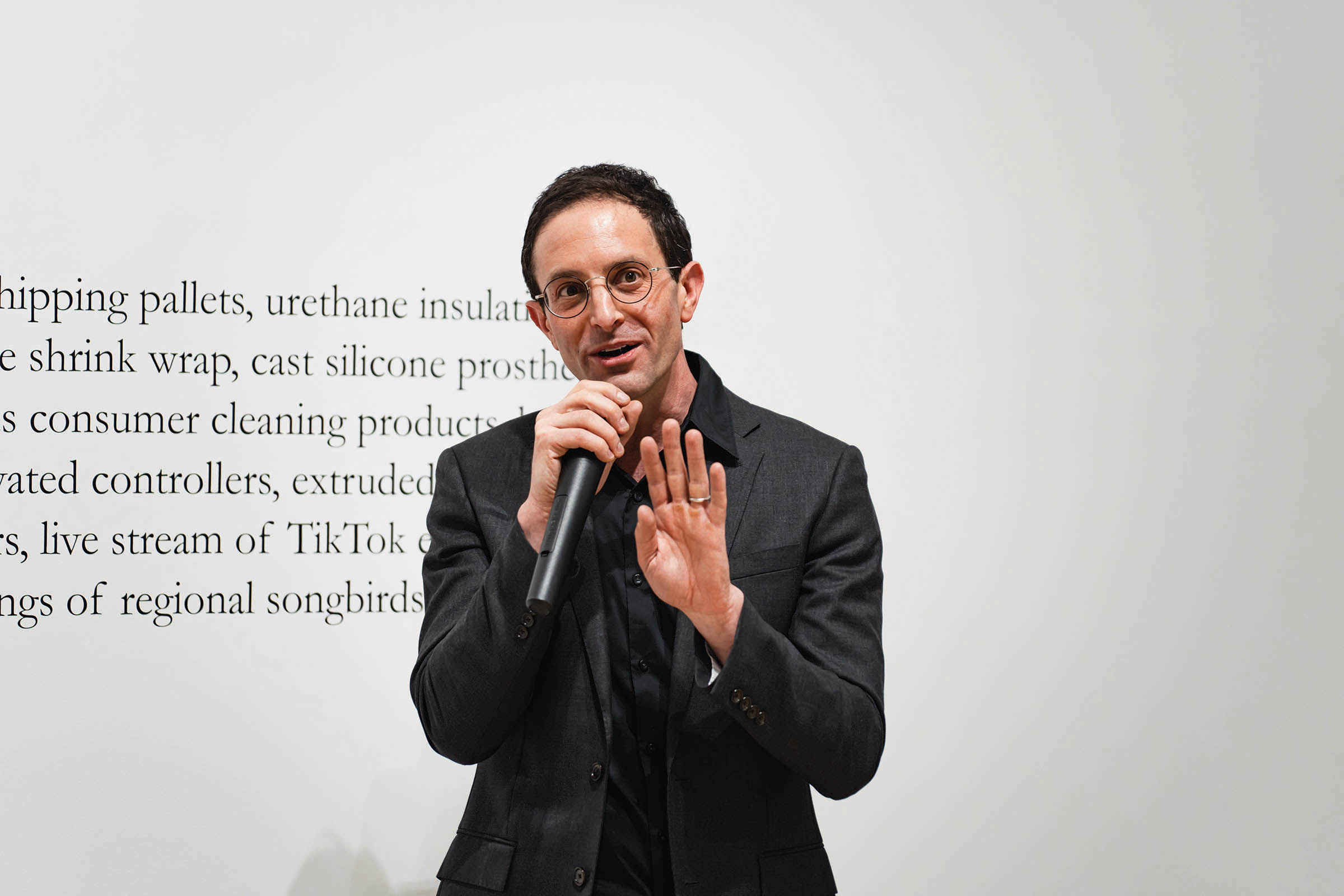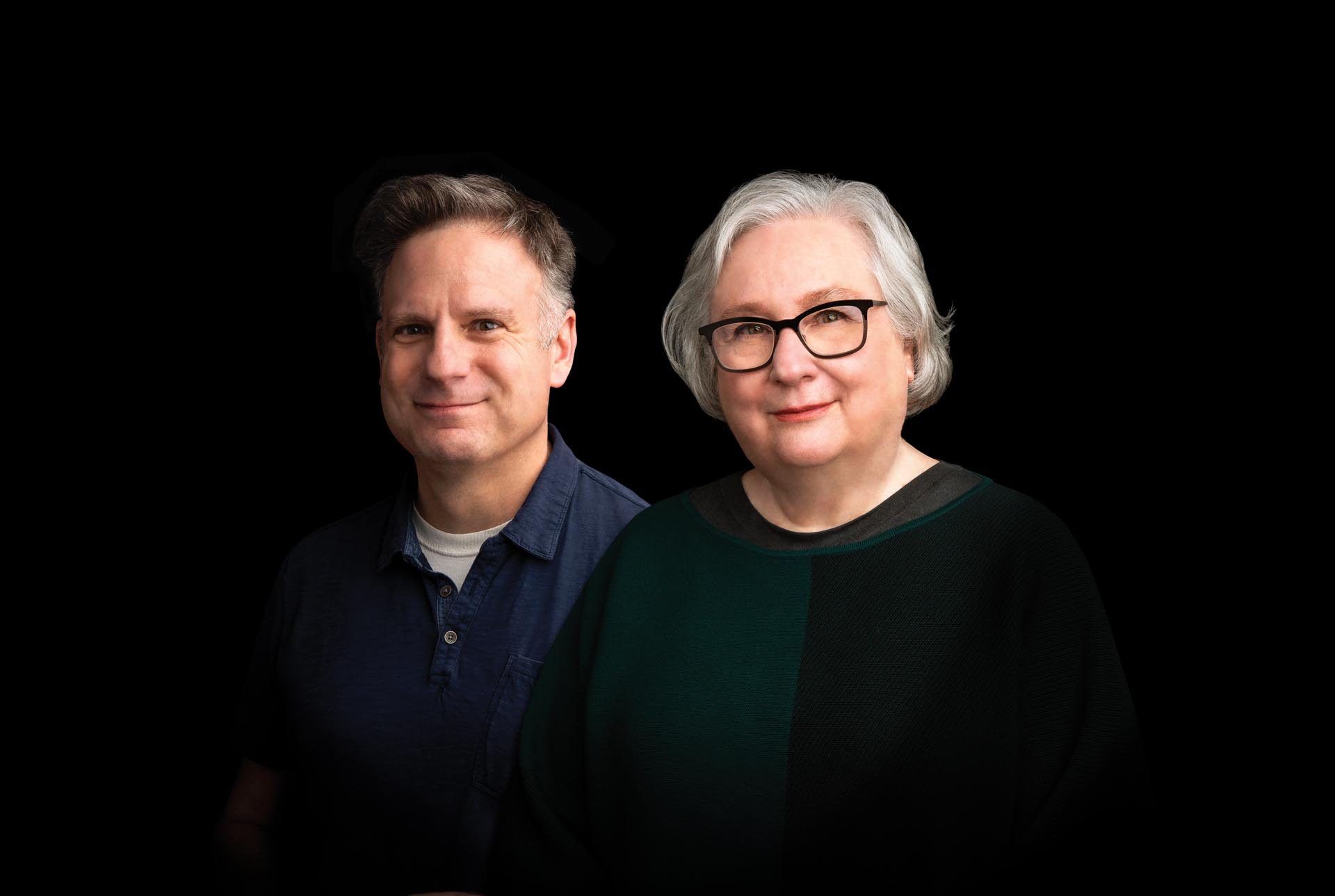Ways of Knowing: Centering Art in Liberal Arts Education

Director of the Center for the Arts Joshua Lubin-Levy ’06 shares his vision for the future of the Center for the Arts on the occasion of its 50th birthday.
The Center for the Arts (CFA) is 50, and though its iconic Kevin Roche and John Dinkeloo–designed buildings look much the same, the way the CFA operates continues to change and grow in response to the ever-shifting conditions of higher education and the broader landscape of arts and culture. I joined the CFA as director in the summer of 2022 and quickly realized that the Center is more vast and meaningful than any one individual’s experience. Still, everyone who has been touched by this place seems to have their own understanding of what is really at the core of the 11-building complex, which on the surface appears to be independent buildings but underground is joined by somewhat secret tunnels. I say “somewhat secret” because the tunnels are used every day by the staff, faculty, and students who keep the CFA buzzing with creative activity. Even now, each year new students discover the tunnels to their own delight, bringing a sense of wonder and excitement, and dreaming up possibilities for what they might do in a space that feels unmarked by any discipline, department, center, or University priority. Set within the campus, the tunnels nevertheless seem to offer a temporary space of escape, all because they exist in this in-between space, which also just happens to be at the center of the Center for the Arts.
Reimagining what art can become
Most readers will know the CFA as a campus arts presenter—a series of venues that annually showcase work by students, faculty, and visiting artists and a hub of contemporary art in central Connecticut. When the CFA opened in 1973, it served to centralize the arts departments at Wesleyan. It continues to be a campus within the campus. Yet, far from segregating the arts from other forms of study, the intent was to concentrate the departments to encourage collaboration across disciplines. It was a time when, not unlike today, contemporary artists were finding all sorts of creative ways to resist being boxed-in by disciplinary convention or market demands. The CFA was designed around this vision, towards a belief in what art could become rather than what it had been.
More than utopian, the vision for the CFA was also born of an urgent desire to find new ways to address pressing social and political issues. The growth of mega-cities, the advanced technological connectivity of a global world, the deepening awareness of historic and systematic inequalities, and the need to dismantle long-held cultural hierarchies—all of these were cited by the CFA’s planning document as something artists might play a key role in helping reimagine. If it’s harrowing to realize that these issues remain as urgent as ever, it’s energizing to know that the CFA’s growth over 50 years is evidence of Wesleyan’s continued investment in art as essential to both a liberal arts education and to creating more just and livable futures.
Part of realizing that investment is taking the time to build longer, deeper relationships with artists and integrating creative process and artistic ideation into the life of the campus in ways that generate meaning and value for both visiting artists and Wesleyan students, faculty, and staff. To do this work, we’re inviting visiting artists to dream about ambitious projects that push them to their limits but which might find valuable resources in the community here at Wesleyan. These speculative projects become a center of gravity, pulling together people from across campus to connect in ways they might never have imagined on their own. For instance, Sunny Jain has spent this academic year working with the CFA to develop Love Force, a music theater project based on satyagraha, a political principle essential to non-violent resistance movements sometimes interpreted as surrounding the oppressor with love. The CFA is supporting Jain in building a performance he can take on tour, but Love Force has already provided a center of gravity for cross-campus collaboration, bringing together faculty from Theater, Music, and the new Global South Asian Studies Program, as well as the student group Shakti, and even some tech-savvy undergrads creating a new music visualization technology. With this longer and deeper model, we move beyond the mere presentation of work, towards building a support network on campus that nurtures artistic ambition and risk-taking while integrating artists with research and projects already underway on campus.
New ways of seeing and creating
Centering art as part of Wesleyan’s core commitment to interdisciplinary education has always been the CFA’s mission. For the Center’s inauguration, President Colin Campbell wrote:
[A]t Wesleyan what one see, hears, or plays is only one dimension of the Arts. We are equally concerned with their cultural, historical, and social implications and with maintaining the closest possible relationship among the disciplines. From a performance standpoint, Wesleyan places a higher premium on involvement than on sheer technical skill. . . . As a result, many undergraduates discover with delight that it is as valid to learn to draw as it is to learn how to write or to speak a foreign language . . . [D]ance, music, and film provide outlets for expressing philosophies, hopes and concerns.
Students and faculty certainly exhibit artistic excellence at Wesleyan every day. But at the Center for the Arts, showcasing technical mastery remains secondary to a more fundamental commitment to the belief that both experiencing and practicing art opens different ways of knowing and producing knowledge. What Campbell describes still rings true, and in the years ahead the CFA will push this mission further.
Art continues to create opportunities for learning specific cultures and histories from across the world, but it also allows us to imagine and make new worlds. Art creates outlets for expressing big ideas, but it also allows those ideas to move out of our heads and into our bodies, creating a pathway from knowing to acting, and from theorizing to practicing. Indeed, art is not only as “valid” as other disciplines, collaborations with artists (especially those that put artists and non-artists in dialogue) provide new ways of approaching familiar disciplines. This makes art essential to institutions of higher education questioning the value of education, considering the way knowledge is applied, and struggling to get students to commune with one another.
Art is a way of knowing that can open other ways of comprehending the world around us. There isn’t a scientific method or formula for this kind of impact, but anyone who has experienced the vibrancy of artistic practice at Wesleyan probably has a sense of what I’m referring to. Emphasizing art’s “ways of knowing” means we’re situating the value of art as more than a question of taste or appreciation—but rather as the potential for art to do something to us, to teach us something in a way we wouldn’t learn by any other means. Before joining the CFA, I spent over a decade working closely with performing artists, mostly as an “outside eye” to their rehearsal process helping to support the development of new projects, but also on a quest to understand how art produces knowledge. As a university that places creative practice alongside other forms of knowledge production in the sciences, social sciences, and humanities, Wesleyan provides an exceptional culture in which to continue this work. As the CFA continues to generate projects that explore new approaches to art-centered scholarship, fostering learning opportunities that exceed the conventional classroom, we have the potential to develop an understanding of the difference art can make not just on our campus but more broadly within the fabric of our society.

Curating connections on campus
What we curate at the CFA, in that sense, are not simply performances and exhibitions, but opportunities to take learning outside of the classroom. We build a bridge between visiting artists and the campus brain trust of students, faculty, and staff. More than a place to encounter extraordinary artwork, the CFA leverages art’s capacity to bring people together. Through projects like the Embodying Antiracism Initiative, we’ve made community-building a priority—connecting with local partners and amplifying the arts and culture that already exist within our local region, which includes the campus and Middletown as well. It’s important to move away from thinking that the CFA’s purpose is to bring art to Middletown, because though we are the key portal for visiting artists and their integral work on campus, there is already a culture of art happening here, much of which predates the formation of the Center. To be more attuned to our role in the community, we need a future CFA attuned to the relationships we can build rather than the productions we can offer.
Artists are already modeling these kinds of practices at the CFA—artists like Renée Green ’81 (whose approach to conceptual art prioritizes the relationships often overlooked in the way institutions measure and record their history) and Deborah Goffe MA ’19 (whose choreography is also a practice of assembling community and building local arts ecosystems). Green and Goffe are contemporary artists whose work requires more than time and space to work. As interdisciplinary artists, their practice often includes building whole administrative support teams and assembling ad-hoc collaborative research projects—without the kind of infrastructure a university could provide. What if the CFA not only curated artists, but resourced them in their practice? What if the CFA itself was directed by such artists, even if only for a little while, and the resources at the CFA were marshalled to support artists in their ongoing practice? The CFA could become a space where visiting artists help set a fluid and evolving course of study that shapes what interdisciplinary learning looks and feels like, sharing their deep creative work with everyone on campus and through that work inviting constituents from across the University into new modes of collaboration and imagining together.
The CFA will continue to provide opportunities for artistic ambition that might have a hard time finding support elsewhere. This means providing artists with more than space and time to work—it means providing them with a sense of belonging and an available community to think with them about the big ideas and “blue sky” projects they keep on their horizon. Indeed, “ways of knowing” isn’t only about what Wesleyan gets out of visiting artists, but also what artists get out of being part of the CFA: a chance to know their work anew. Too often, markets demand an artist iterate on the same formula of success, further forcing each artist to claim their own unique or individual stake in the game. Let’s imagine a future CFA that provides more opportunities for artists to commune with each other and holds space for artists who are at transformative moments in their practice, whether they are emerging or established, leaving room for artists to grow in relationship to their work.
The future of the CFA will be about building a different kind of partnership between the visiting artist and the University. It will be a CFA that creates conditions for artists to be in relationship to each other, and that remains adaptive to artist needs and ambitions. We should expect the CFA to be transformed by the way visiting artists pull the Center in different directions. We might also expect Wesleyan to feel the transformative effect of being led by art and artists in collaborative and interdisciplinary research projects. Of course, the CFA will continue to provide a welcoming and world-class home for the celebrated work of our students and faculty; and we will continue to incubate ambitious projects by visiting artists that meaningfully integrate across the campus curriculum. But my aim for the CFA’s future is that it continue to create partnerships through the arts that glisten with the magic of the Wesleyan student experience. I remember as a student encountering a deep sense of feeling authorized to chart my own path in understanding the world in front of me. How can we bring this same sense of curiosity and rigor, open exploration and razor-focused passion, hunger for community and suspicion of conformity, to visiting artists collaborating with students and sharing with audiences, igniting and inspiring everyone in the process? The experience of a student who discovers the CFA tunnels and, from within this space created by Wesleyan, finds a way to imagine a world beyond—that’s the guide star for the CFA’s future.



